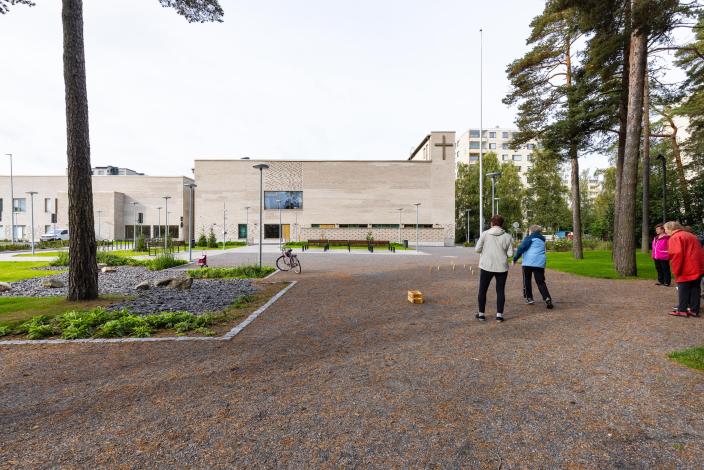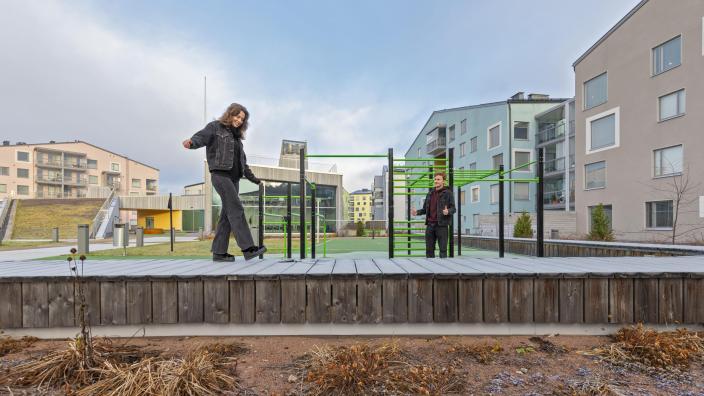Turku’s central urban area is densely populated. It is becoming even more so as the city’s population continues to rise. This rise in growth is apparent in the vast construction efforts and the new large residential areas that have sprung up on the outskirts of the city centre in
Population growth in Turku and the Turku region is at a record high. In 2023, the number of residents in Turku grew more than it had since 1972. And the growth continues. According to the latest population projection, the city could gain as many as 40,000–59,000 new inhabitants by 2040.
However, an increase in population does not necessarily mean the city will expand outward. In fact, growth is being managed by densifying the urban structure. This approach is driven by several factors.
Why do we want the city to be denser?
Firstly, the goal is to create a sustainable foundation for urban living. A city resident must be able to move around their home city in a way that minimises environmental impact. This is why housing is primarily built in areas with existing services and good public transport connections.
Secondly, new residential areas will be developed in places where infrastructure is already in place, avoiding the need to take over natural areas. These include former storage and industrial sites, where activities have decreased and land is now available for redevelopment.
Shorter distances, proximity to services, and efficient public transport promote climate-friendly mobility. The goal is for walking, cycling, and public transport to account for over 66 per cent of travel in Turku by 2030.
Construction takes place even in suburbs
In particular, urban planning focuses on developing new apartments within approximately three kilometres of the city centre. New residential areas in this zone, characterised by densification and sustainable urban development, are already under construction. These include: Pukkila, Herttuankulma and Kirstinpuisto. Many new developments are also taking place in the Science Park in Kupittaa, where the goal is to build as many as 10,000 new apartments in the coming decades.
The city is also being densified in areas with good public transport connections. Such areas include Länsikeskus, Runosmäki, Varissuo and Skanssi.

If realised, the tramway project would also drive the growth of areas along the route. The planned route would run from Varissuo to the harbour through the Science Park, the city centre and Linnakaupunki.
Along with the city centre, active urban infill development is also taking place in many residential areas. In the city centre, examples of this include the surroundings of the Parkki field and the Turku Energia block. Additional construction supports the sustainable growth of the city.
Not just apartment blocks
Turku is constantly increasing its residents’ opportunities to live in areas with single-family homes. The strongest growth is expected on the island of Hirvensalo, where most of the development before 2030 will be concentrated. The partial city plan for Hirvensalo allows for the arrival of around 15,000 new residents on the island.
Satava and Kakskerta are also growing. A partial city plan has been approved for the area, allowing for the development of the eastern end of Satava as a single-family home area, along with the development of other parts of the islands.
Another key area for growth in terms of available plots for single-family homes is Northern Turku. In Jäkärlä, the focus on available plots is shifting from the Vakiniittu local detailed plan area to Koskennurmi. The first plots will be available for construction as early as 2025. A local detailed plan will also be developed for the Kaila area, south of Tampereentie.
More day-care centres and schools
The growth of Turku is not just about residential construction, as the residents also need services. Over the next four years, the city will invest more than one billion euros in infrastructure and business premises.
During the current decade, Turku is planning to build three new multi-purpose buildings: the Karhunaukio multi-purpose building in Huhkola, and new multi-purpose buildings in the Linnakaupunki and Pansio-Perno areas. At the same time, new sports facilities will also be developed.
By 2029, the city will have 12 new day-care centres. In addition, numerous school projects are under way, the largest of which is the Lyseo School in Runosmäki.
There has been a strong demand for small apartments in Turku, as the number of people living alone has steadily increased. The demand has now shifted, and an increasing number of larger apartment blocks will also be built in the future.
TEXT: ANNAMARI NURMINEN
PHOTOS: TIMO JAKONEN, HEIKKI RÄISÄNEN
The article was published in Turkuposti 1, 2025
Text continues after image

Siblings Meri and Martin Mäenpää from Laitila have lived in the new residential area of Linnanfältti for six months.
– This is a quiet, peaceful area with good connections. We have enjoyed ourselves here, says Meri Mäenpää.
The siblings live in a three-room apartment. For them, Linnanfältti with its wooden apartment blocks, and the historic surroundings of Turku Castle, offer a pleasant environment.
The construction of Linnanfältti began in 2017. It is one of the national spearhead projects of the Modern Wooden City programme.
